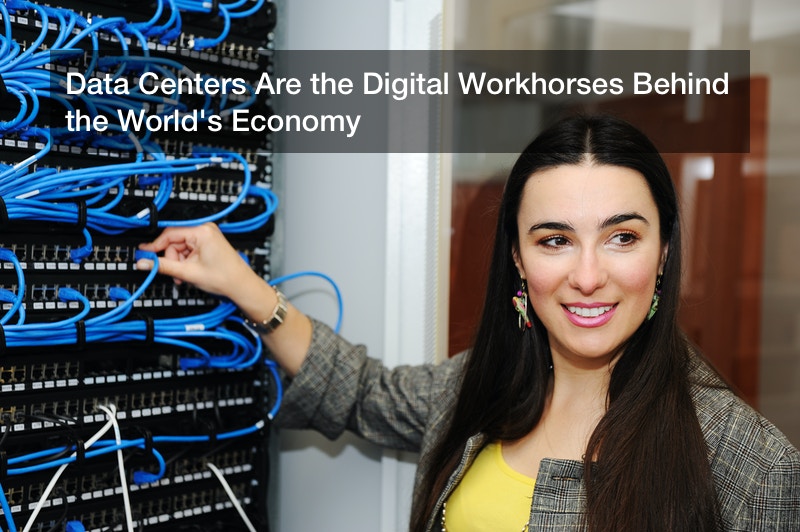Data Centers Are the Digital Workhorses Behind the World’s Economy


Being deemed as one of the essential employees during this time of the Coronavirus comes with both perks and challenges. You are, first and foremost, thankful that you have a job in a time when so many others do not. As one of the 10 essential workers in an office of 120 people means that you can come and go from the office as you want. You do not need permission to come in; you do not need permission to work from home. Those are the advantages.
The fact that you are considered a Level 14 pay grade, however, means that you had to take an immediate reduction in pay. To the tune of 12.5%, your April 1 checks until the end of the year will be significantly less. At the same time that you are being paid less, of course, you also find yourself needing to do tasks that you have not attended to in years. Although there are still data center staff in the computer spaces, they are also short handed and you have had to go into that space and help. From tasks that require you to defamiliarize yourself with data center cable management, server rack sizes and placement, and hot aisle containment options, you are resisting nearly every part of your history in this career.
Data Center Cable Management Is an Essential Part of Planning and Expanding Financial Services
In a time when nearly every purchase that is made requires a card swipe, it should come as no surprise that there are many data center workers who are considered essential staff. From vice presidents who oversee coders who are working from home and from the folks who are in the data centers monitoring hot aisle containment systems, today’s economy relies on digital transactions. Merchants are concerned about being able to verify data to avoid fraud and consumers are concerned about protection so that they do not become victims of identity theft. Running behind all of these transactions, of course, is a complicated and well monitored system of data center cable management and specific oversight of rows and rows of server racks.
Consider some of these facts and figures about the data center industry and the role that it plays in the everyday lives of most Americans, as well as the economy of the entire nation:
- The air conditioning costs alone, and required maintenance are an essential consideration in a data center. For example, AC costs of an average server room with 30 KW of coolers operating at 70% capacity with an average cost of 12.7 c/kWh will be $23,000pa and 243 tonnes while producing green-house gases.
- Based on current electricity price increases and the carbon levy this cost could rise by as much as 67% in the next three years. Air conditioning efficiency improvements, however, can reduce this cost by as much as 35%.
- Data centers more than seven years old are considered out of date according to the latest Green Computing norms. The average life of a data center in practical terms, however, is considered to be nine years.
- The power density of a data center today is 100 times more than that of a large commercial office building and is equivalent to nine small sized shopping malls the size of a Wal-Mart store.
- Details matter as more than 65% of IT equipment failures are directly attributed to inadequate, poorly maintained, or failed air conditioning in the server room.
- In addition to convenience and efficiency, 82% of companies indicate that they saved money by moving to the cloud.
- 80% of data centers employ or are looking into installing hot or cold aisle containment systems to keep servers at the correct temperatures and reduce energy use.
- By the end of 2020, 47% of all servers sold are expected to go to hyperscalers, according to the Cisco Global Cloud Index 2015-2020/Synergy Research.
- Disaster recovery service demand grew 23% in the year 2019 alone.
- More than 38% of large companies were expected to exceed IT capacity within 18 months, according to survey results conducted in 2011, and those numbers continue to grow.
The nation’s economy depends on many things to keep running, but behind all of these factors are the most basic tasks of data center cable management and other kinds of space considerations.